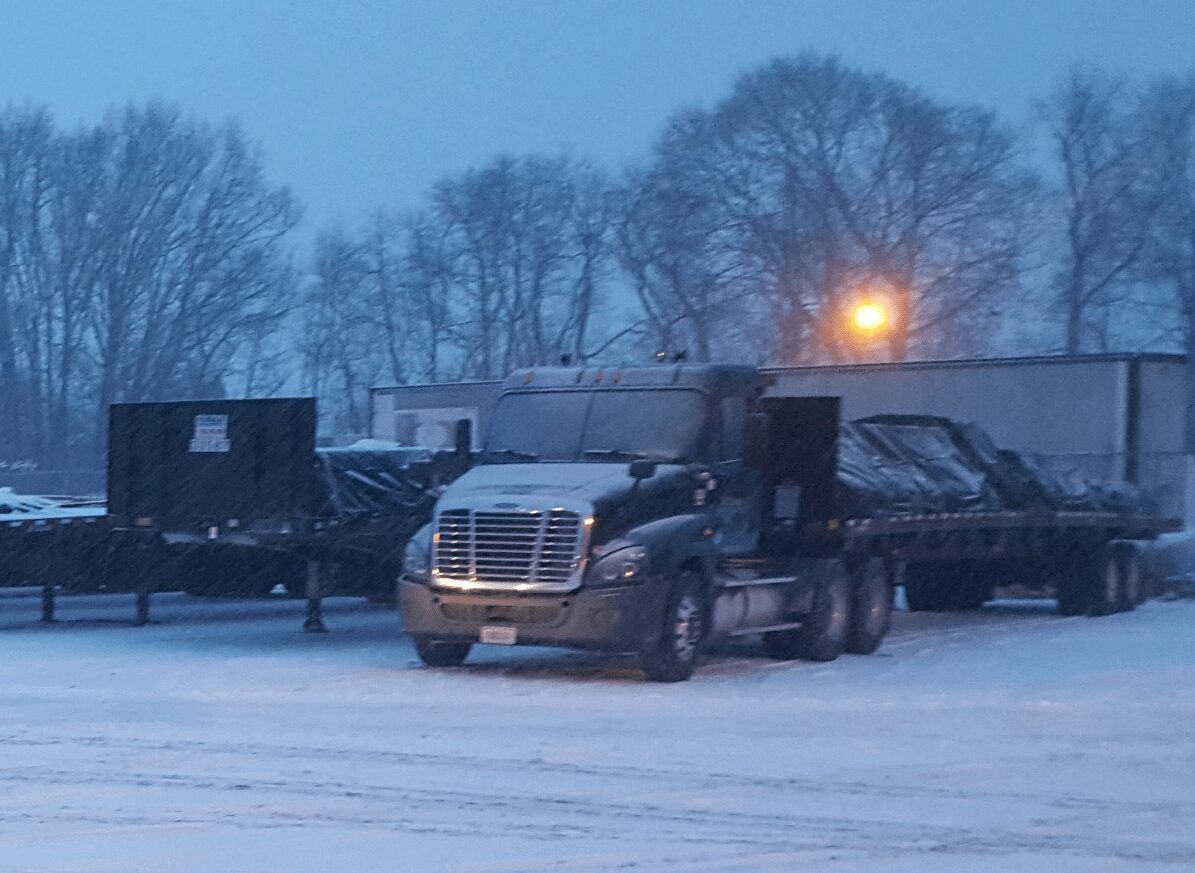
As the Environmental Health & Safety Manager at Merfish United, I’m responsible for maintaining safe work environments at both United Pipe facilities and around United Pipe flatbed trucks on the road and during deliveries. With a big winter storm about hit parts of the North East, here’s some things that our drivers will be thinking about, and you and your team can consider as well. Let’s stay safe out there!
Pre-trip checks and Precautions
- Make sure the weight of your load is evenly distributed. If your product shifts on icy roads, it’ll make it more difficult to control your vehicle.
- Treating your fuel with anti-gel. Freezing temperatures often cause diesel fuel to congeal.
- Have extra wiper blades handy.
- Check your headlights, brake lights, and hazard lights. Keep clear and brush off snow whenever you stop.
- Maintain mirror visibility by keeping your windows and mirrors clean and free of ice.
Control Your Speed & Avoid Skidding
Ice and snow will decrease the traction of your tires, which makes sudden stops and turns more difficult. To stay safe, decrease your speed and increase your following distance. This will give you more reaction time and make hydroplaning less likely. It may also be a good idea to turn off your cruise control and adjust your speed frequently according to the conditions.
If you do begin to skid, remember to:
- Pump the brakes, don’t lock them.
- Shift to neutral.
- Control the truck by turning the wheel in the direction where you’d like to go.
- At the end of the skid, put the truck in gear instead of coming to a stop. Accelerate slowly to keep your traction.
Watch Out for Trouble Spots
When it’s raining, snowing, or the temps are below freezing, the roads will be even more dangerous. In bad weather, take extra caution when you encounter:
- Exit ramps
- A turn that’s too sharp or taken at too high of a speed could cause you to lose control if the road is slippery.
- These surfaces are the first to freeze.
- Black ice
- This transparent ice often looks like nothing more than a wet road.
- Look for these spots when temperatures are near freezing.
- Brake early when you see stop signs or red lights.
Maintain Tire Traction
- Stay away from the tire tracks of other vehicles.
- Packed snow is more likely to cause your wheels to spin.
- Make any accelerations gradually.
- Decrease your speed. The higher the speed, the easier it will be to lose your traction.
- Don’t use your Jake brake. Since this brake controls only the tractor and not the trailer, taking your foot away from the accelerator can make the trailer slide out and cause a jack knife.
Don’t Be Afraid to Stop
If conditions get really bad, don’t let the pressure of delivering your shipment on time get in the way of your judgment. Whenever driving conditions become unsafe, pull off the road and wait. Pushing through on roads that haven’t been plowed or a storm that’s taken a turn for the worse will cause more problems in the long run than reaching your destination a little late.
Get Help
If an emergency does occur, here’s what you should remember:
- Don’t let anxiety get the best of you. Modern technology will make it very likely that someone will know where you are, even if you’ve lost cell phone or radio reception.
- Make a call, if possible. Keep your cell phone and computer charged just in case you need to make an emergency call in bad weather.
- Stay inside.
- Leaving your truck to look for help can put you in a bad situation.
- Having an emergency Kit with extra food, water and clothing will help you to wait things out inside the truck until help arrives.

